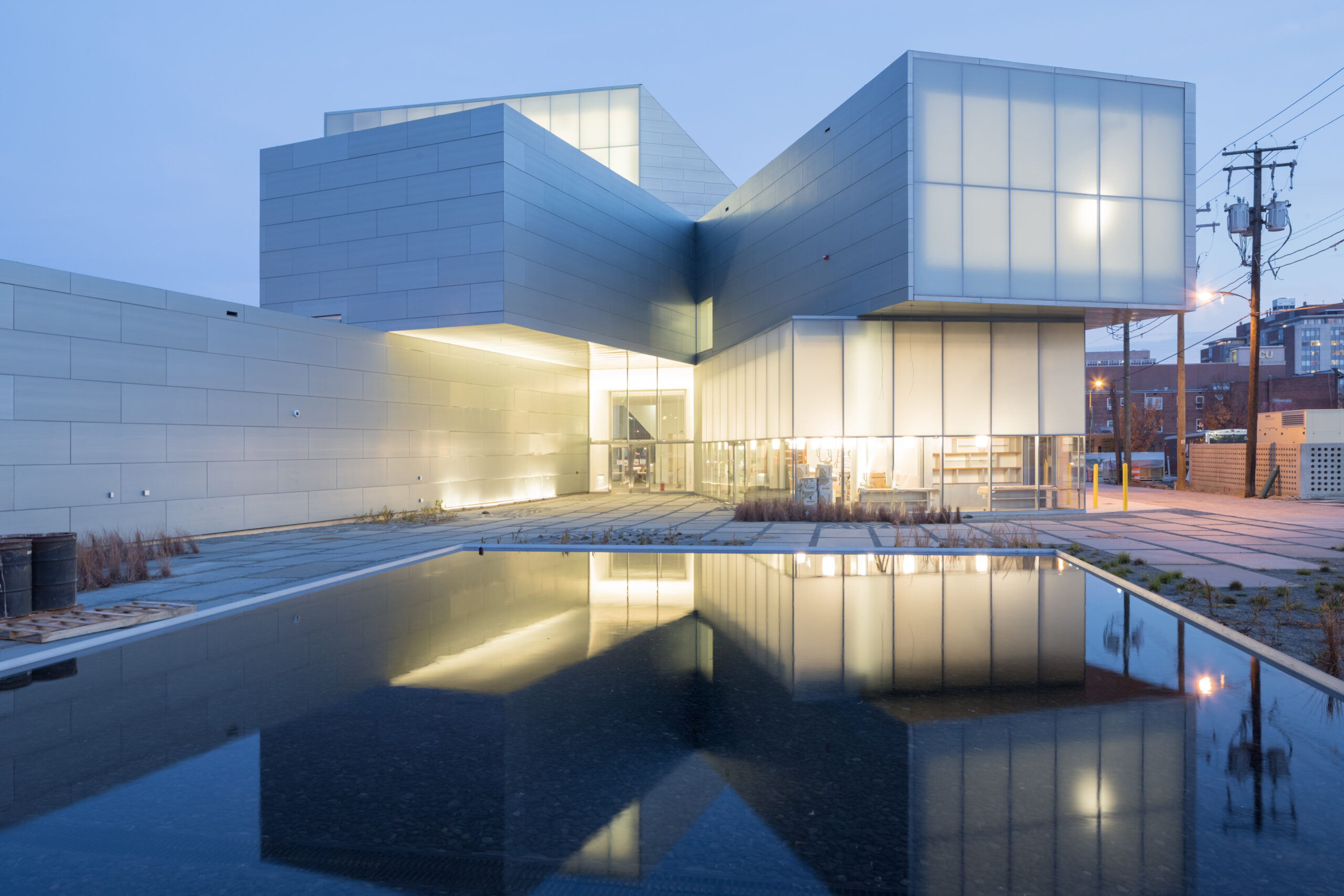“On a street that once marked the boundary between black and white communities in Richmond, Va., a gleaming new Institute for Contemporary Art is set to open this spring with an exhibit called ‘Declaration’ that will boldly confront pressing social issues in a city that was once the capital of the Confederacy.
Designed to explore contemporary art’s power to catalyze change, the inaugural exhibit will feature many site-specific works by 33 emerging and established artists from Richmond and around the globe, including Paul Rucker. His site-specific installation ‘Storm in the Time of Shelter,’ an ominous crowd of larger-than-life-size Ku Klux Klan robes reproduced in fabrics including camouflage and African Kente cloth, is unlikely to be viewed here without recalling the white nationalist rally that erupted in violence last August in Charlottesville, just 70 miles away.
This is Richmond’s first free-standing institution devoted to contemporary art. Designed by the star architect Steven Holl, it is a dramatically sculptural building clad in luminous glass and zinc, and deftly situated at a historic pivot point in the city, on the edge of the main campus of Virginia Commonwealth University.
‘This is the front door, if you will, for all of the different constituents to get together and look at art which will be everything from beautiful to controversial and a place to sift and winnow ideas,’ said Joseph Seipel, interim director of the institute and dean emeritus of the university’s School of the Arts, ranked second for arts and design schools nationwide by U.S. News & World Report’s Best Graduate Schools.
Discussion of building an art institution on campus reaches back across two decades among civic and university leaders, including Mr. Seipel, who wanted to create something commensurate with the ambitious graduate school of the arts, according to Michael Rao, president of Virginia Commonwealth.
The I.C.A.’s long-anticipated opening — on April 21 — hit a speed bump in January. Lisa Freiman, its director for the last five years who completed a capital campaign of $37 million for the building, put the staff and programming in place and was one of the curators of “Declaration,” unexpectedly stepped down “to turn my attention to some projects that I had to put on hold,” according to a news release from the university. Ms. Freiman declined to comment further.
The show will go on as planned, led by the I.C.A.’s chief curator, Stephanie Smith. “The exhibition is functioning as a declaration of intent for the I.C.A. being an institution that’s going to grapple directly with issues that matter in our world through supporting artists’ diverse voices,” Ms. Smith said.
Almost half the artists have been commissioned to make new work for the show. Tania Bruguera, Hope Ginsburg, Titus Kaphar, Lee Mingwei, Amalia Pica and Betty Tompkins, among others, deal head on with issues of race, gender, the environment, social dysphoria and the possibility for repair.
Amos Paul Kennedy Jr., a letterpress printmaker based in Detroit, collaborated with barbershops and salons near the I.C.A., social sites where the African-American population in particular gathers. “He thought that would be a great way to reach out and speak to an audience that might not otherwise be aware of the I.C.A. or think that it was a place for them,” Ms. Smith said. Over the course of six months, the artist collected snippets of conversation from patrons on issues of the day.
Mr. Kennedy then distilled the text into hundreds of brightly colored letterpress prints that will wallpaper the entrance wall to the I.C.A. “Richmond citizens will walk in and see their own voices reflected on the wall of the institution,” Ms. Smith said.
Mr. Rucker, who is in residence at V.C.U., working with students, is interspersing historical artifacts related to the Ku Klux Klan with his refashioned Klansmen robes. The symbolism of the piece is complicated. Does it “reflect the ways institutionalized racism has in some cases been camouflaged within our current culture,” posed Ms. Smith, or is it “a Judo move neutralizing a symbol of oppression by transforming it into something that is the artist’s own?”
Such nuanced questions are bound to reverberate loudly in this city. “The I.C.A. sets itself in this really rich environment, equidistant from Monument Avenue, Lumpkin’s jail in the center of the slave trade, the tobacco industry, the financial district and Jackson Ward, this amazing center of black entrepreneurship,” said William Martin, director of the Valentine, a nearby museum dedicated to Richmond’s history. “Those of us downtown are surrounded by these tensions of Richmond’s history. You can’t operate without that context.”
– Hilarie M. Sheets
Read the full article at The New York Times.
Phots © Iwan Baan
